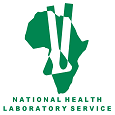TEST DETAILS |
BACK |
| Test: | ßENaC R563Q mutation |
| Alternate names: | Liddle syndrome; Epithelial sodium channel |
| Description: | The epithelial sodium channel (ENaC) is the principal site for regulating the amount of sodium reabsorbed by the kidney, and increased activity of this channel is the final common abnormality in several forms of low-renin hypertension: primary aldosteronism, glucocorticoid remediable aldosteronism, Liddle’s syndrome, and 11-β-hydroxysteroid-2 dehydrogenase deficiency [1]. Activating mutations of either the α or ß ENaC subunits can result in Liddle’s syndrome [2,3], in which constitutive reabsorbtion of Na+ leads to hypertension, low plasma levels of renin and aldosterone, and hypokalemia. 1.Lifton RP. Proc Natl Acad Sci USA 92:8545-8551,1995. 2.Garty H and Palmer LG. Physiol Rev 77:359-396,1997 3.Liddle GW, et al. Trans. Assoc. Am Physicians 76:199-213,1963. 4.Rayner BL, et al. J Hypertension 2003 Vol 21 No 5. |
| Clinical: | Black and mixed ancestry patients with low-renin, low-aldosterone hypertension have been shown to carry mutations in the βchain of the ENaC gene4. The most common of which is the R563Q mutation. |
| Methodology: | DNA extraction followed by PCR and restriction enzyme digestion to detect the R563Q mutation. Alternatively, full sequencing of exon 13 offered. |
| Turn around time: | 4-6 weeks |
| Transit stability: | stable |
| Comments: | |
| Sample: | Blood EDTA 3 ml |
| Type: | Genetics |
| Method: | Point mutation analysis |
| Consultant/scientist: | Ms Surita Meldau |
| Tel: | 021 404 4449 |
| email: | surita.meldau@nhls.ac.za |
| Contact for results: | Ms Surita Meldau |
| Tel: | 021 404 4449 |
| email: | surita.meldau@uct.ac.za |
| Delivery address | C17 NHLS Labs, NGSH, Observatory, 7925 |
| for samples: | Cape Town |

